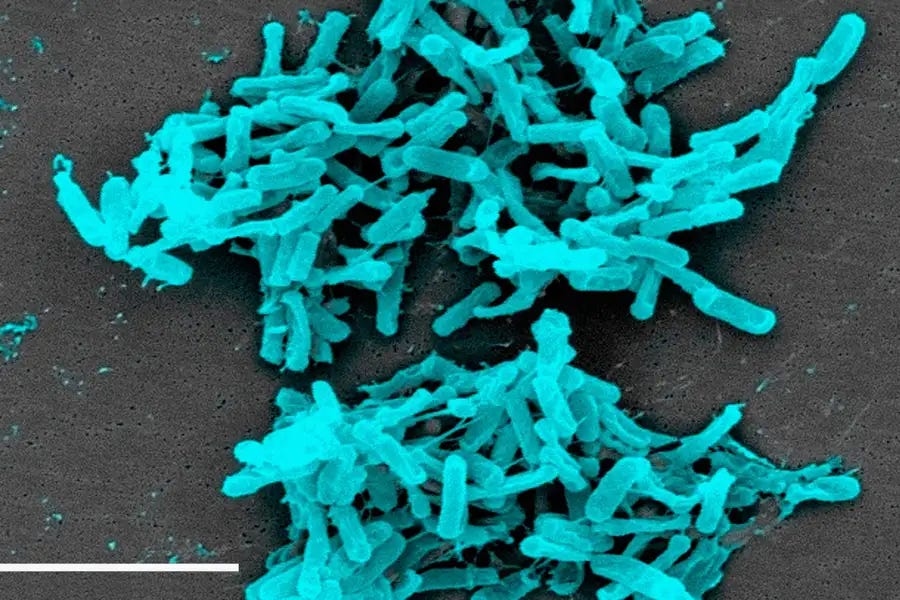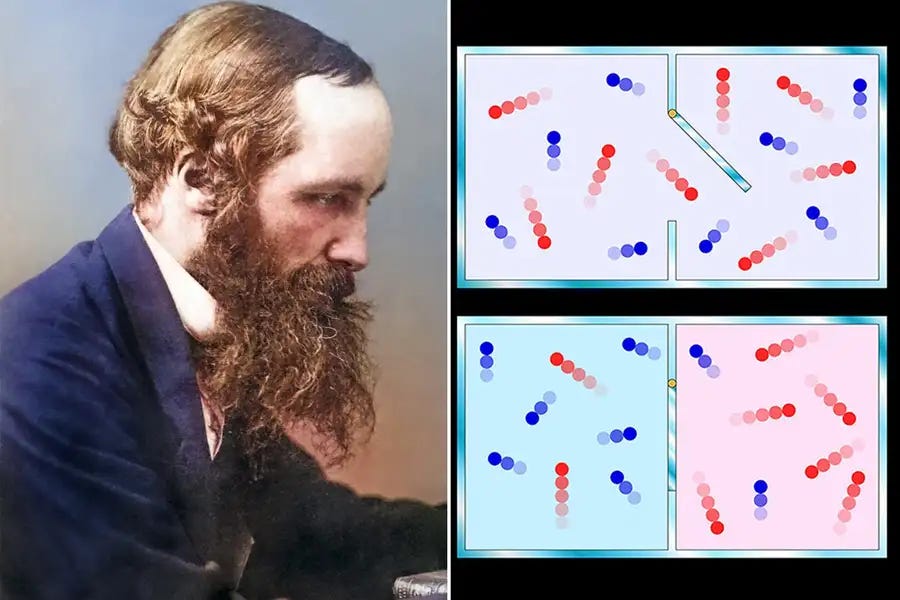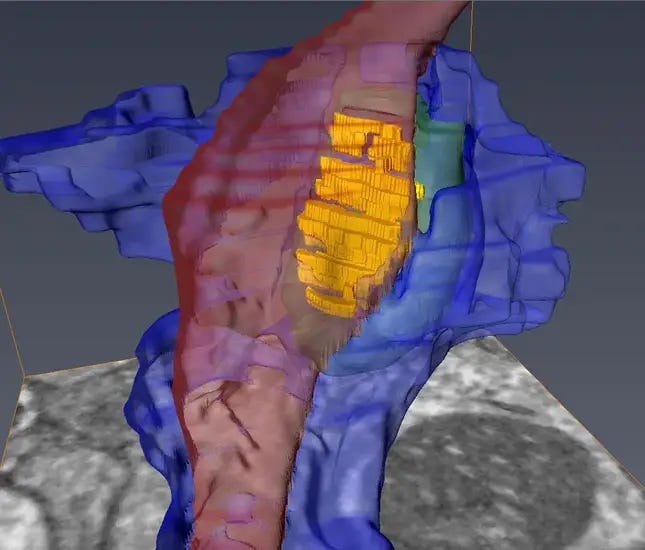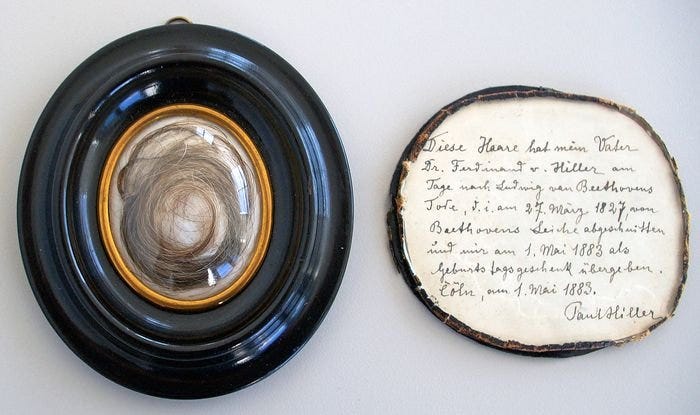Sci-Ed Update 290
Franklin's bone secret revealed, Beethoven's DNA secret revealed, height affects microbiome, contraception history, eye atlas seen, synapse revealed in 3D, asympt COVID gene revealed, & more!
The 1,200 Buried Bones in the Benjamin Franklin House
For more than two centuries, hundreds of human bones have rested (in peace) under the London home of Benjamin Franklin — one of the founding fathers of the U.S. But the secret of these bones isn’t quite as horrific as you might suspect.
As it turns out, the son-in-law of Franklin’s landlady taught anatomy privately in the house, at a time when the new field of science was just taking off in England. But that doesn’t mean the bones were completely innocent: The practice of dissection wasn’t strictly legal back then.
Read more→ AandP.info/txq
Your height may influence the diversity of your gut microbiome

A person’s height may influence the bacterial diversity of their gut microbiome. This could be due to taller people potentially having longer gastrointestinal tracts that can house a broader array of microorganisms. Not everyone is convinced by this, however, with one scientist arguing that a person’s genetics or having a poor diet during childhood could both inhibit their growth and affect their gut microbiome.
Among vertebrates, a larger body size has previously been associated with more diverse colonies of gut microbes. While this trend is most evident between animals with large size differentials, for example mice and elephants, Kat Sarmiento at the Institute for Systems Biology in Seattle and her colleagues wanted to see whether it applies to people.
The researchers gathered data from more than 5000 people who previously took part in a gut-related experiment and more than 3000 people from a wellness programme. All provided information on their height, which ranged from 127 to 218 centimetres, as well as faecal samples for gut microbiome sequencing.
Read more→ AandP.info/v4o
Your Podcast-Listening Habit
What?! You’re not in the habit of listening to podcasts? That’s too bad, because you’re missing out on a lot of interesting, helpful, entertaining, and energizing experiences. Of course, you know how to develop a habit, right? It’s scientifically proven. You do something you want to regularly. Then you do it again. Then you do it again and again on a regular schedule. Before your know it, it’s a habit!
Podcasts are easy. And most of them are free of cost! Go to your smart device and look for the podcast app (they all come with one pre-installed: Apple Podcasts or Google Podcasts, for example). Or go to any app that plays audio (e.g., Spotify, Audible, Apple Music, etc.). Or search your app store for a different podcast or radio app. And either scan the top recommendations or search for the subjects or people you are interested in and follow them.
Interested in A&P teaching? Well, there’s my podcast, The A&P Professor. Or you can try Anatomy Education Podcast, with a large library of previous episodes and soon to be rebooted by the American Association for Anatomy (AAA) with new episodes. And there’s Ask Anatomist, Gross Anatomy, Dr. Matt and Dr. Mike's Medical Podcast, and, well, just a whole bunch more!
And literally hundreds of thousands of active podcasts available in all kinds of subjects, genres, languages, and viewpoints. Even those no longer active have a rich library of previously released episodes available.
Why not get aligned with this growing trend and start your podcast habit this week?
Maxwell's demon imagined by physicists really exists inside our cells

In 1867, physicist James Clerk Maxwell was pondering possible exceptions to the second law of thermodynamics, which says things must always flow from hot to cold unless there is some energy source to counter this tendency. He imagined a weightless door between two boxes of gas, operated by a tiny demon. If the demon only lets faster particles move into one chamber and slower ones into the other chamber, one box would heat up and the other would cool down. This would mean you could create energy from nothing by exploiting the temperature difference of the boxes, violating the second law.
This apparent paradox was only solved in the 20th century, when information theorists like Rolf Landauer realised that the demon would have to measure information about each gas particle, store it in its memory and erase its memory for more measurements. This would require more energy than the demon could create by keeping the boxes at different temperatures.
Now, Paolo De Los Rios at the Swiss Federal Institute of Technology in Lausanne and his colleagues have shown that ABC transporters – tiny proteins that can shuttle molecules across a cell membrane – act exactly like the demons proposed in Maxwell’s original paradox.
“They make very concrete connections between the rigorous idea of Maxwell’s demon as it is now understood in statistical physics and the way these ABC transporters work,” says Nahuel Freitas at the University of Buenos Aires in Argentina. “They go beyond the level of a metaphor.”
This connection also means that an ABC transporter can be thought of as a simple computational device, performing the same logical “AND” operation that silicon computer chips do, says Freitas.
Kevin Patton comment→ I doubt whether this line of inquiry will be useful for teaching human A&P, but it’s fascinating nonetheless!
Read more→ AandP.info/wbj
We’ve Been Using Birth Control for Millennia
For nearly as long as we’ve been having sex, we’ve been attempting to control reproduction. After all, there’s more than one reason why humans like to get it on.
We’ve put countless potions into our bodies in an effort to prevent pregnancy — some innocently ineffective and others dangerous or even deadly. Through the ages, birth control has certainly changed. But the reasons behind it remain much the same.
The Ancient History of Birth Control
The ancient Egyptians took a host of strange concoctions that they insisted could stave off pregnancy. They advocated for the use of a peculiar mixture of crocodile dung and acacia honey. According to the book "The history of contraception: From ancient Egyptians to the "morning after," the mixture was inserted and then "left in the vagina for long periods before intercourse.” After sex, people utilized a combination of wine, garlic and lavender as an ancient morning-after method.
In ancient Rome, Hippocrates instructed the use of a birth control method that included a mixture of iron sulphate and copper. Even the Bible mentions birth control, though not in a positive light: The use of the “withdrawal method” for preventing pregnancy was frowned upon, though widely used. An article in the International Encyclopedia of the Social & Behavioral Sciences describes “coitus interruptus, or withdrawal of the penis before ejaculation,” as condemned in the book of Genesis.
Read more→ AandP.info/q9d
New Cell Atlas Signals Hope for Aging Visual Impairments

Researchers created a groundbreaking “cell atlas” of the human eye that could revolutionize treatments for blinding diseases like glaucoma and macular degeneration. The atlas identifies nearly 160 unique cell types across different eye structures, and pinpoints which genes each cell type expresses.
The study paves the way for highly targeted gene therapies by showing exactly where disease-associated genes are activated. Beyond clinical applications, the atlas offers evolutionary insights into the complexity of human vision.
Key Facts:
Led by neurobiologist Joshua Sanes, the team cataloged nearly 160 cell types across the human eye, from the retina to the optic nerve.
Using single-cell RNA sequencing, the atlas maps the expression of over 180 genes associated with glaucoma, the leading cause of blindness worldwide.
The research involved the analysis of 151,000 single cells and could inform both therapies for blindness and our understanding of vision’s evolution.
Read more→ AandP.info/2bg
Neuroscience Breakthrough – New Images Capture Unseen Details of the Synapse

Scientists have created one of the most detailed 3D images of the synapse, the important juncture where neurons communicate with each other through an exchange of chemical signals. These nanometer-scale models will help scientists better understand and study neurodegenerative diseases such as Huntington’s disease and schizophrenia.
The new study appears in the journal PNAS and was authored by a team led by Steve Goldman, MD, Ph.D., co-director of the Center for Translational Neuromedicine at the University of Rochester and the University of Copenhagen. The findings represent a significant technical achievement that allows researchers to study the different cells that converge at individual synapses at a level of detail not previously achievable.
“It is one thing to understand the structure of the synapse from the literature, but it is another to see the precise geometry of interactions between individual cells with your own eyes,” said Abdellatif Benraiss, Ph.D., a research associate professor in the Center for Translational Neuromedicine and co-author of the study. “The ability to measure these extremely small environments is a young field, and holds the potential to advance our understanding of a number of neurodegenerative and neuropsychiatric diseases in which synaptic function is disturbed.”
Read more→ AandP.info/t02
A Genetic Explanation for Why Some People Had Asymptomatic COVID-19
It’s estimated that at least 1 in 5 people with a SARS-CoV-2 infection never develop symptoms. Genetics might explain some of these asymptomatic cases, it turns out. In a new study appearing in Nature, people with a particular gene variant appeared to have preexisting T cell immunity to the virus, likely a holdover from previous bouts of the common cold.
In the discovery cohort, 1292 participants had COVID-19 symptoms while 136 participants were asymptomatic. A common variant, or allele, known as HLA-B*15:01 stood out:
This variant was found in 20% of asymptomatic participants but only 9% of participants who reported symptoms.
People with 2 copies of the variant, inherited from both parents, were more than 8 times as likely to not have symptoms than those who carried no copies.
The variant also had a strong association with asymptomatic infection in the 2 independent cohorts.
A meta-analysis of data from the discovery and independent cohorts found that asymptomatic infections were more than twice as common in people who carried the variant.
The T cell analysis revealed that before the pandemic even began, participants with the variant had killer T cells that could effectively target SARS-CoV-2.
Read more→ AandP.info/kt7
DNA From Beethoven’s Hair Unlocks Family Secret
The researchers reported in a paper published Wednesday in the journal Current Biology that they hoped studying his DNA might help determine the cause of Beethoven’s progressive hearing loss, chronic gastrointestinal complaints and severe liver disease culminating in his death at the age of 56 in 1827.
The researchers didn’t find a genetic cause for Beethoven’s deafness or stomach pain. They found genetic risk for liver disease and evidence of hepatitis B infection, which can lead to scarring of the liver known as cirrhosis.
The analysis also revealed unexpected findings about Beethoven’s ancestry and the origins of some of the locks of hair.
They compared the Y chromosome of Beethoven’s genome against that of the five living men from the Van Beethoven line. A male’s Y chromosome remains nearly identical to his father’s and is passed down through generations. The five living Van Beethovens were related to each other—but not to Ludwig van Beethoven, the researchers found.
Read more→ AandP.info/rg6







